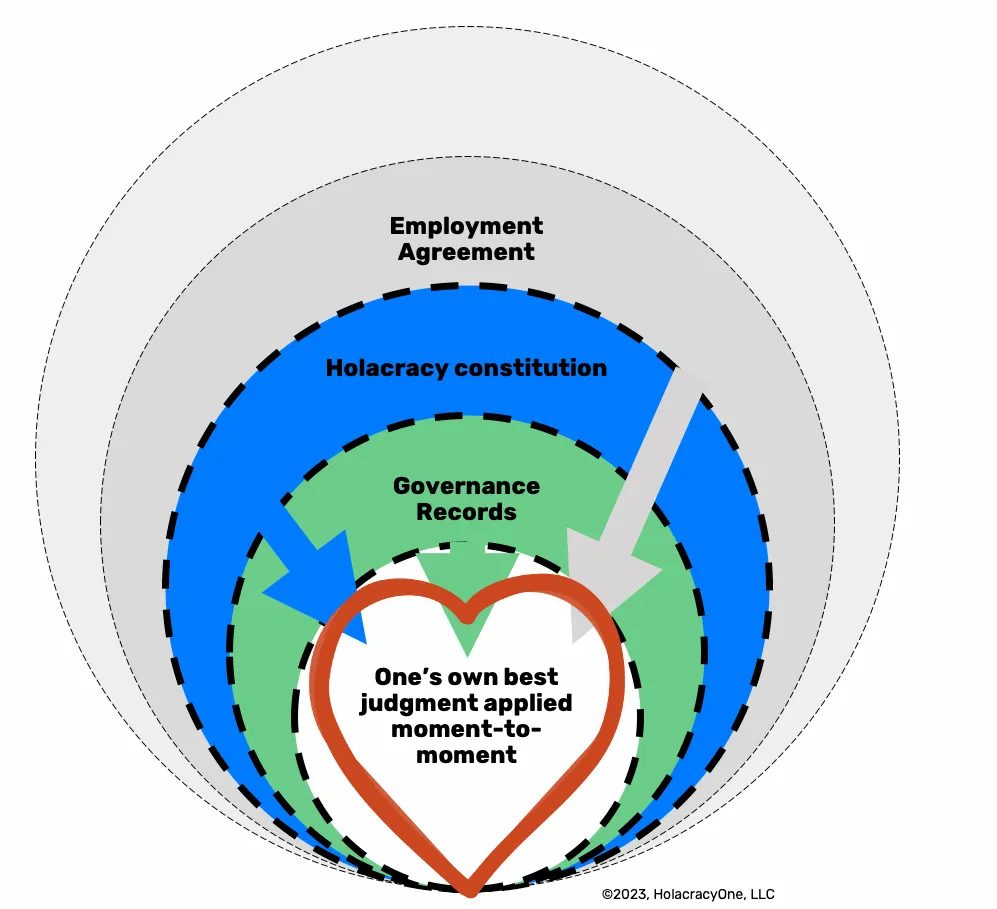The Heart of Holacracy®
Holacracy Practitioner’s Guide
Holacracy Practitioner’s Guide

Here’s a non-obvious fact about Holacracy practice: it is not a substitute for good judgment, expertise, or maturity. And that’s because, in essence, people are fundamentally imperfect. Though few human systems seem to properly account for that imperfection (much less embrace it).
You might even say that the primary failure of most forms of government, collaboration, or decision-making, is that they work well when the people are working well, but fail very quickly when the people fail.
Though this is still true of Holacracy, I think Holacracy practice (when done well) actually embraces and integrates human imperfection in ways that are unique and important to understand. I call this perspective, “The Heart of Holacracy,” both because it sits in the center of my conceptual model (see below), but also because it represents the human side of the practice.

At its heart, Holacracy’s framework enables individuals to exercise and apply their judgment. It acknowledges your individual sovereignty and a space I call “One’s own best judgment applied moment-to-moment.” Of course, Holacracy didn’t invent your freedom and ability to make the choices you think are best. But its framework embraces, gives pathways, and encourages you — no matter what external forces are pressed upon you — to choose how to interpret or respond to those forces.
Holacracy’s framework enables you to choose whether to follow the posted guidelines and rules or change them (through governance and other ways). You can choose to respond to external forces and apply your best judgment or not. You can choose to follow the conceptual roads and signposts or create new roads and signposts. But, in every case, you’re making the choices and driving your own car.
As I said, you might even say that the primary failure of most forms of government, collaboration, or decision-making, is that they work well when the people are working well, but those systems tend to fail very quickly when the people fail.
Historically, it seems human systems have accounted for our innate imperfection in a few ways:
Although these are very broad descriptions (and by no means exhaustive), you can see different elements of them expressed in most organizations today.
The modern “Boss” often has Type 1-type authority. Stay in their good graces if you want to succeed. Oh, and it’s not enough that you abide by all of the company’s work expectations, your social media accounts will also be reviewed to ensure your behavior and beliefs don’t reflect poorly on the group (Type 2). Also, Cliff’s whole department has underperformed, but don’t worry, management is taking a Type 3 approach and hiring someone new (and much “better”) to replace him.
In comparison, how does Holacracy view human imperfection? It’s probably something like this:
Of course, the three previous approaches I described are not so much inherently, “wrong” as they are simply, themselves, imperfect. But maybe (and I believe this to be true) Holacracy’s approach to “humane structure,” accounts for and embraces human imperfection in ways that are just a little less imperfect.
To learn more about self-management, join a community of pioneers and check out our e-courses → Self-Management Accelerator
